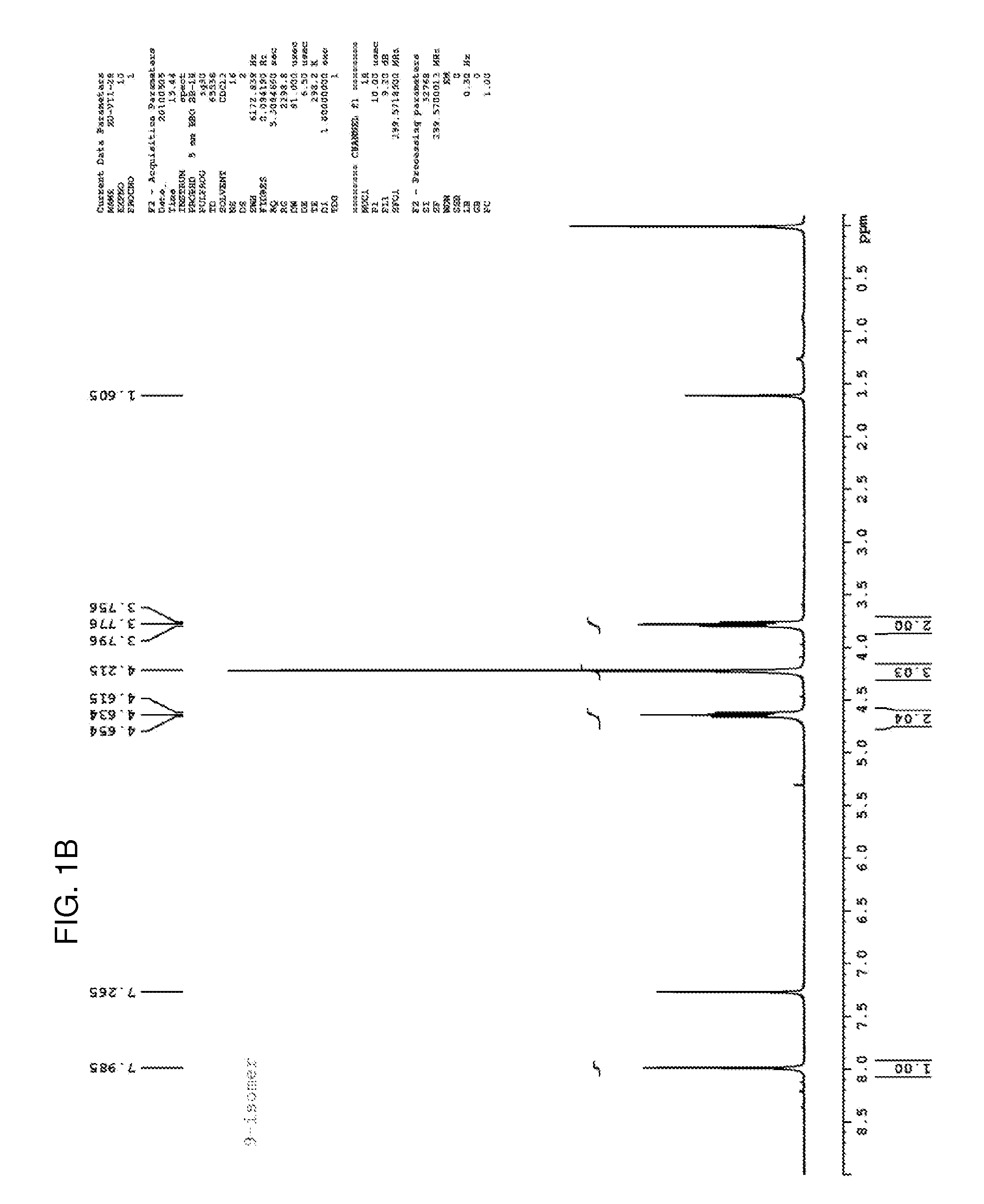Selective antibacterials for clostridium difficile infections
a technology for clostridium difficile and selective antibacterials, which is applied in the field of selective antibacterials for clostridium difficile infections, can solve the problems of serious threat to public health of bacteria, and achieve the effect of reducing the likelihood of developing or to develop, and promoting growth
- Summary
- Abstract
- Description
- Claims
- Application Information
AI Technical Summary
Benefits of technology
Problems solved by technology
Method used
Image
Examples
example 1
Synthesis of Representative Compounds
Compound 362E.
[0121]Step 1. Potassium carbonate (1.38 g, 10 mmol) was added to a solution of 2-chloro-6-methoxypurine (830 mg, 4.5 mmol) in acetonitrile (40 mL). The suspension was stirred at room temperature for 10 minutes, after which 1,2-dibromoethane (5.64 g, 30 mmol) and tetrabutylammonium iodide (37 mg, 0.1 mmol) were added. The mixture was stirred in an oil bath at 45° C. for 48 hours. The mixture was removed from the oil bath, and the solvent was removed on a rotary evaporator at 45° C. The residue was applied to silica gel column, and washing with 0.7% methanol:methylene chloride afforded first the 7-isomer (289 mg, 22%) and the 9-isomer (380 mg, 29%). The 1H NMR spectra of both are shown in FIGS. 1A-1B, and the 13C NMR spectrum of the 7-isomer is shown in FIG. 1C.
[0122]Step 2. Morpholine (87 mg, 1 mmol) was added to a suspension of 7-(2-bromoethyl)-2-chloro-6-methoxypurine (80 mg, 0.275 mmol) in acetonitrile (6 mL), and the mixture was ...
example 2
Inhibition of Anaerobic Bacterial Growth by 7-substituted-2-benzylamino-6-oxopurines
[0126]Each compound was assayed against a panel of anaerobic bacteria in culture, consisting of Gram-positive organisms, such as Lactobacilli, Bifidobacteria, Clostridium spp., and Gram-negative bacteria, such as Bacillus fragilis spp., according to guidelines of the Clinical and Laboratory Standards Institute (CLSI document M11-A7, CLSI, Wayne, Pa., 2007). A stock solution of test compound in DMSO was diluted with drug-free medium and used to make a series of Petri plates or tubes in a series of two-fold serial dilutions, from about 32 to 0.015 μg / mL. One tenth mL of diluted bacteria containing 500-1000 colony-forming units (CFU) was plated and spread, and the plates incubated at 37° C. for 24-48 hours. MIC (minimum inhibitory concentration) is equivalent to the lowest concentration in μg / ml at which growth, i.e., colony formation, is not observed. Typical results are shown in Tables 1-4.
[0127]The m...
example 3
Protection of Hamsters from C. diff.-Associated Infection
[0136]The clindamycin-induced C. diff. infection model in Syrian golden hamsters serves to demonstrate the efficacy of the test compounds against experimental C. diff.-associated diarrhea (CDAD) in vivo. Compound 359E protected hamsters from lethal infection with C. diff. (see Table 5).
[0137]Compound 359E was given orally as a suspension in 1% carboxymethylcellulose to Syrian Golden hamsters, pretreated subcutaneously with clindamycin and infected orally with C. diff. (ATCC43255) as described in Table 5. The response to a twice daily regimen of oral 359E and comparison with the efficacy of oral vancomycin are presented in Table 5.
[0138]
TABLE 5C. diff. infection model in Syrian golden hamsters*%Group#Treatment, PO,Survivors atSurvivors atn = 6bid, for 3 days24 hr48 hr66 hr72 hr96 hr120 hr1neg. control,6400no-treatment2vancomycin HCl in66666100water, 50 mg / kgbid for 3 days3359E, in 1% CMC in66666100water, 50 mg / kgbid for 3 days4...
PUM
| Property | Measurement | Unit |
|---|---|---|
| minimal inhibitory concentrations | aaaaa | aaaaa |
| pharmaceutical composition | aaaaa | aaaaa |
| charge | aaaaa | aaaaa |
Abstract
Description
Claims
Application Information
 Login to View More
Login to View More - R&D
- Intellectual Property
- Life Sciences
- Materials
- Tech Scout
- Unparalleled Data Quality
- Higher Quality Content
- 60% Fewer Hallucinations
Browse by: Latest US Patents, China's latest patents, Technical Efficacy Thesaurus, Application Domain, Technology Topic, Popular Technical Reports.
© 2025 PatSnap. All rights reserved.Legal|Privacy policy|Modern Slavery Act Transparency Statement|Sitemap|About US| Contact US: help@patsnap.com



